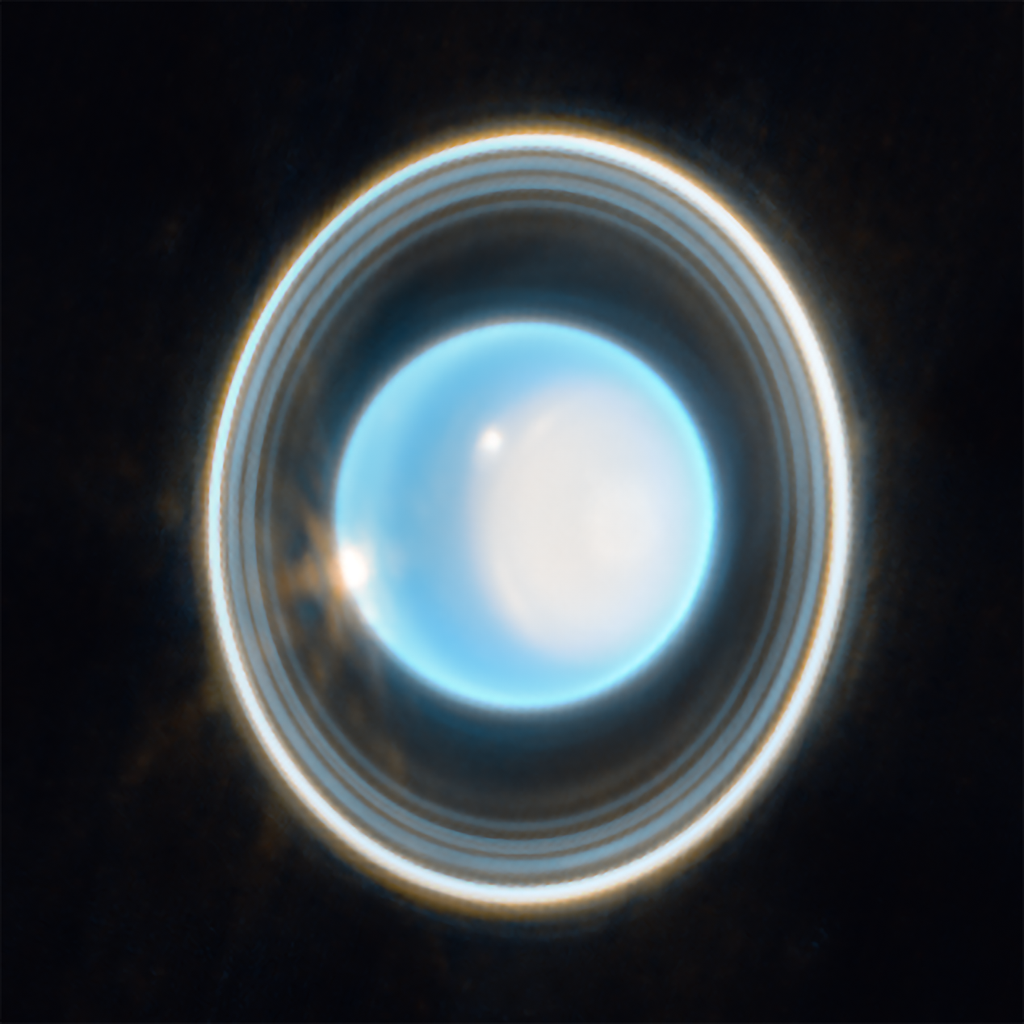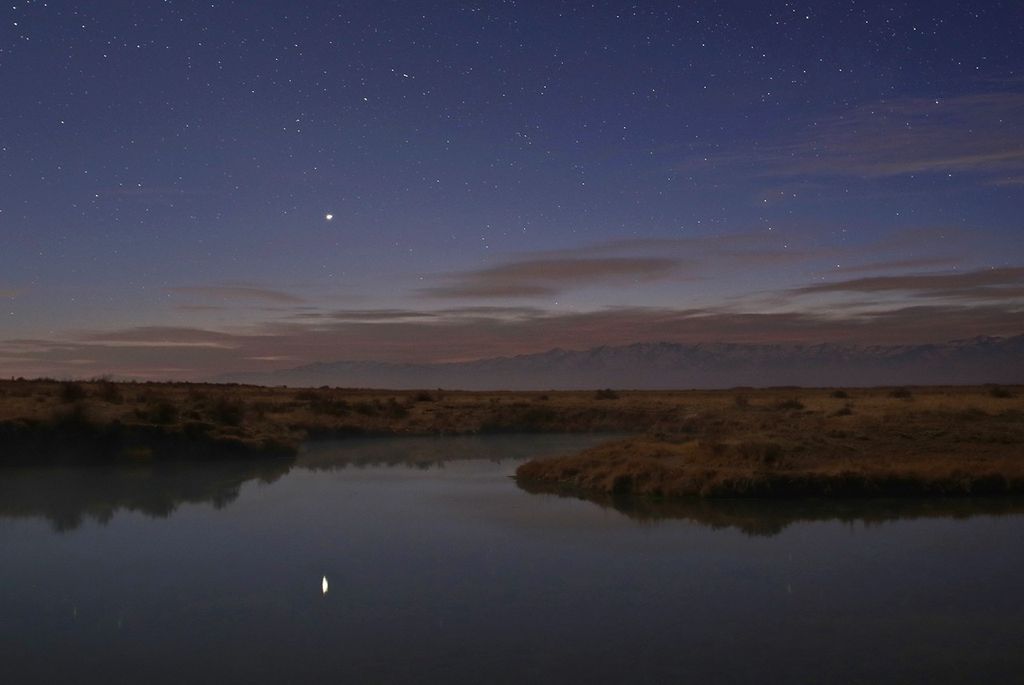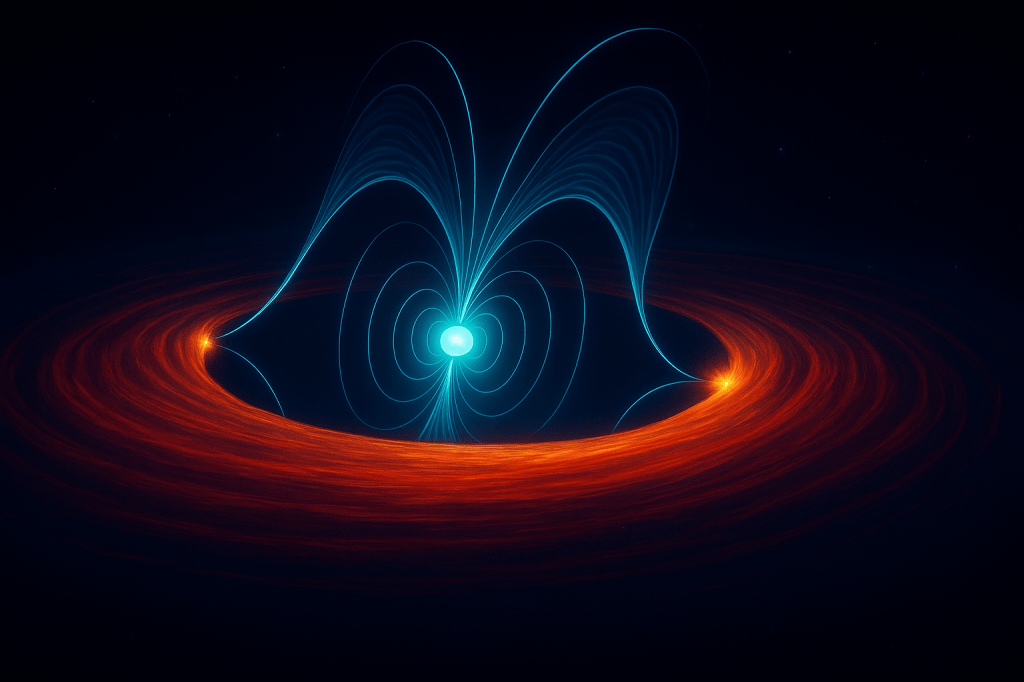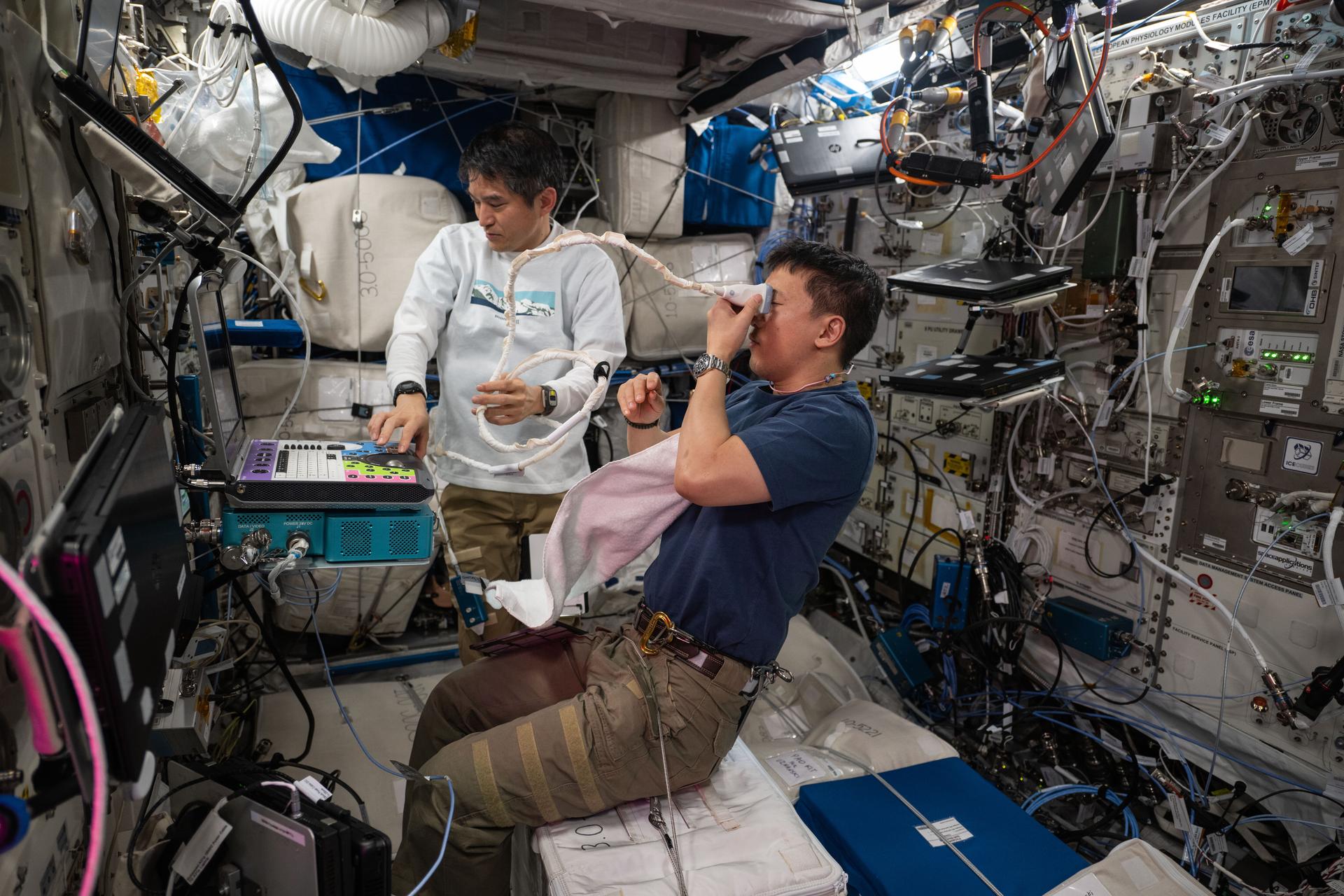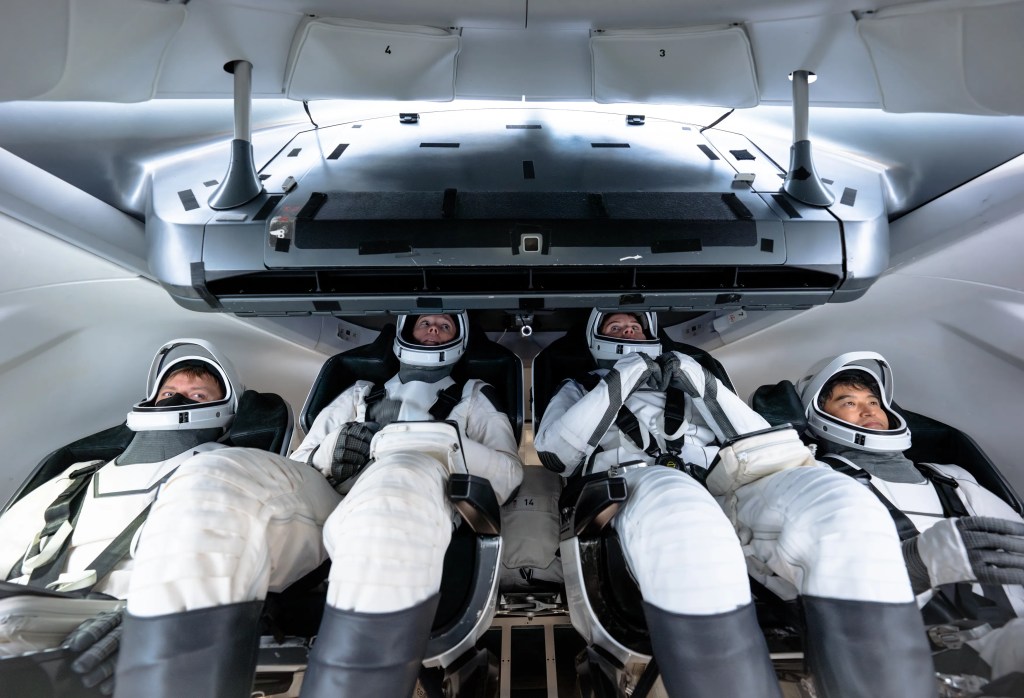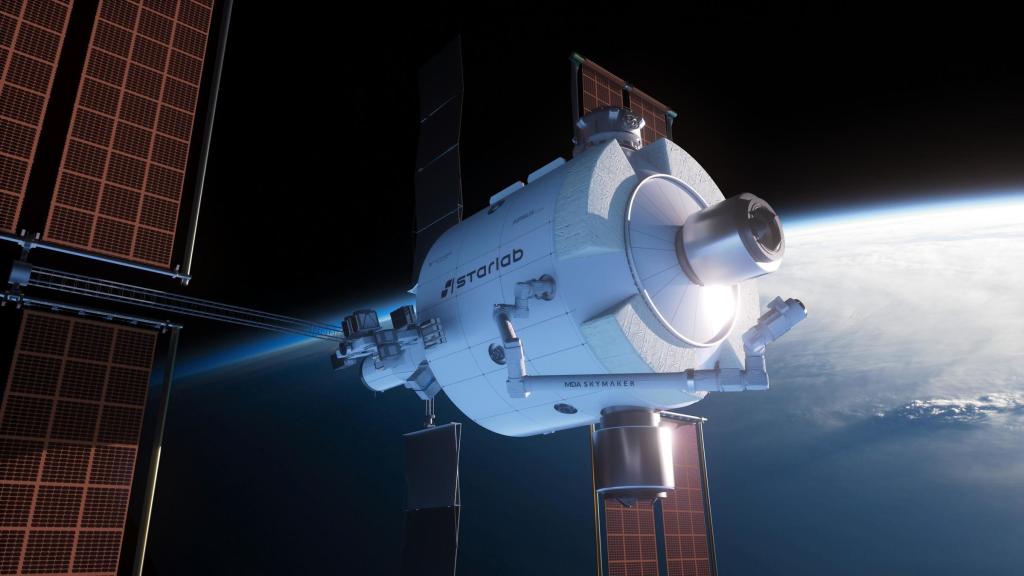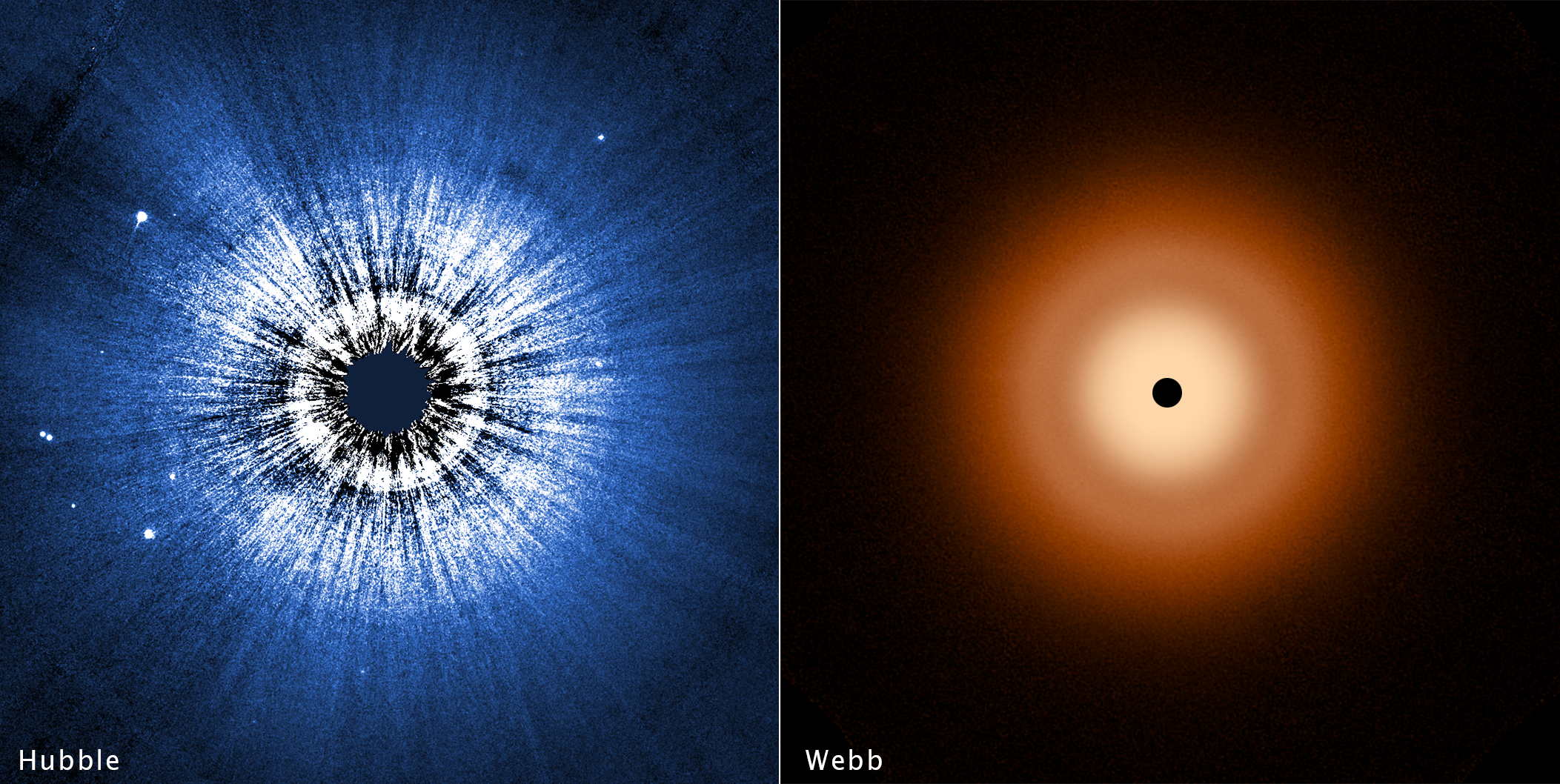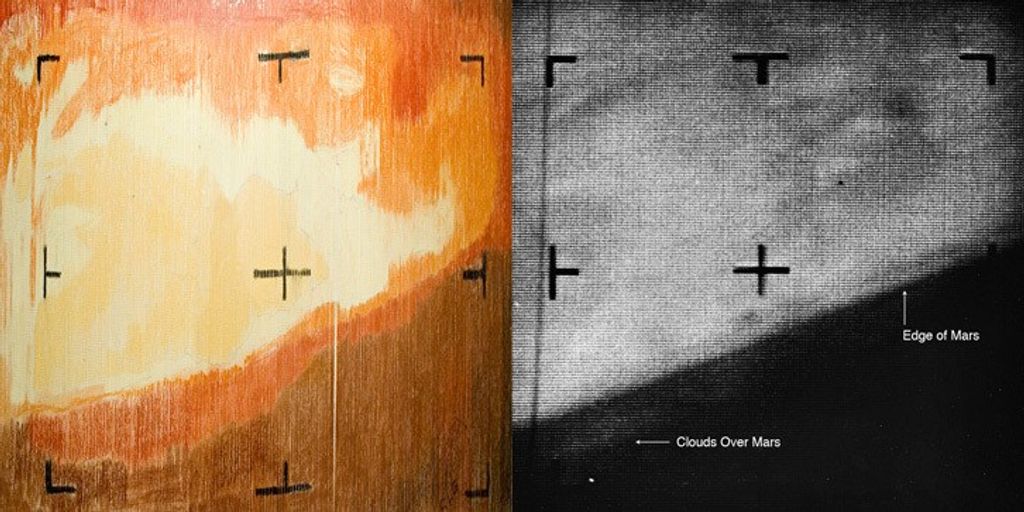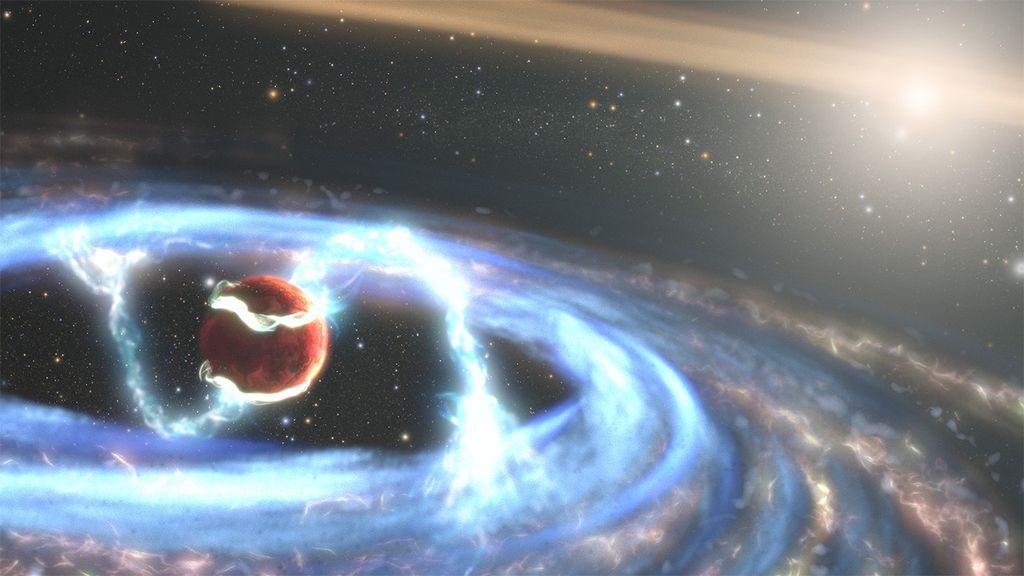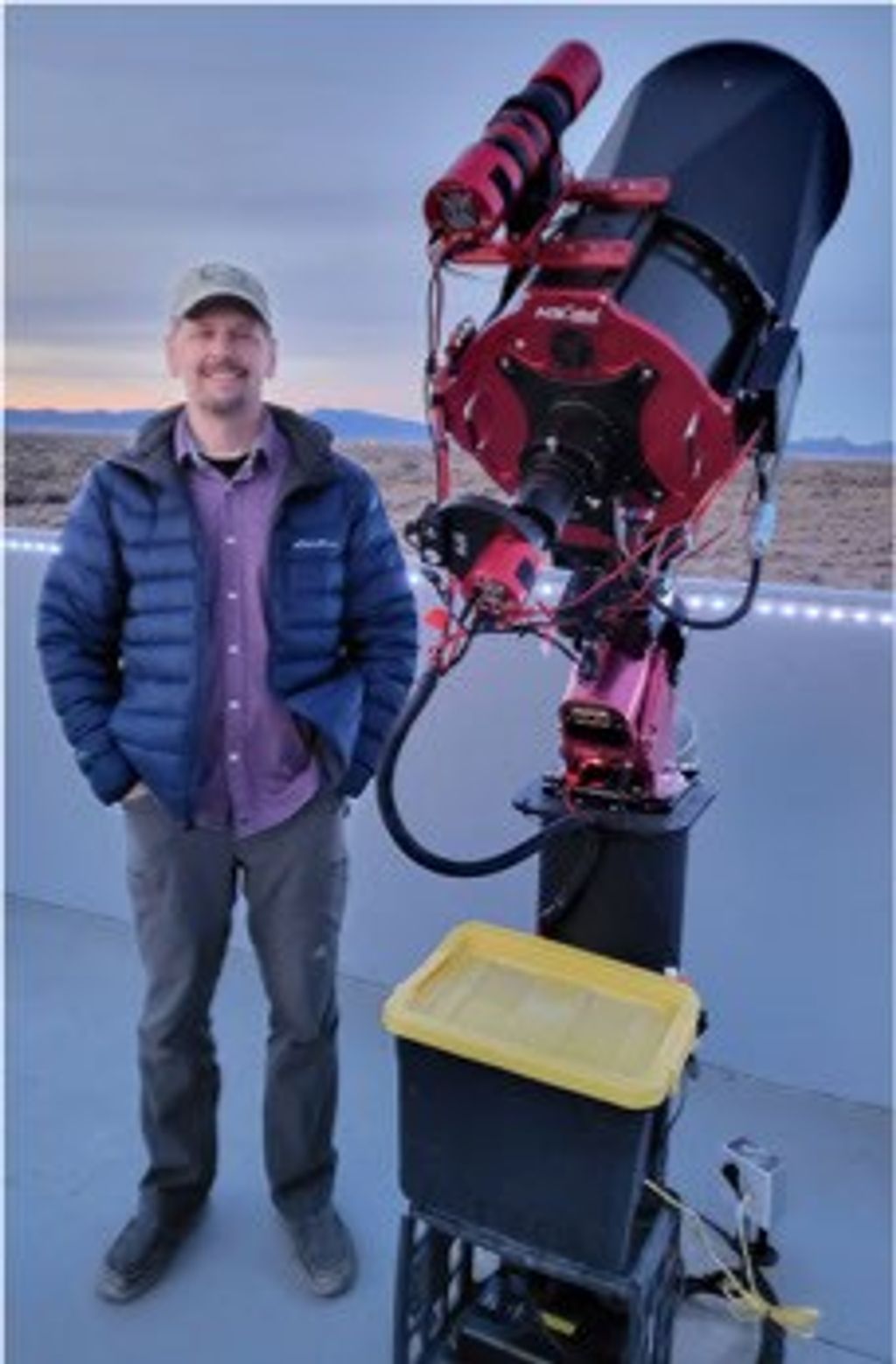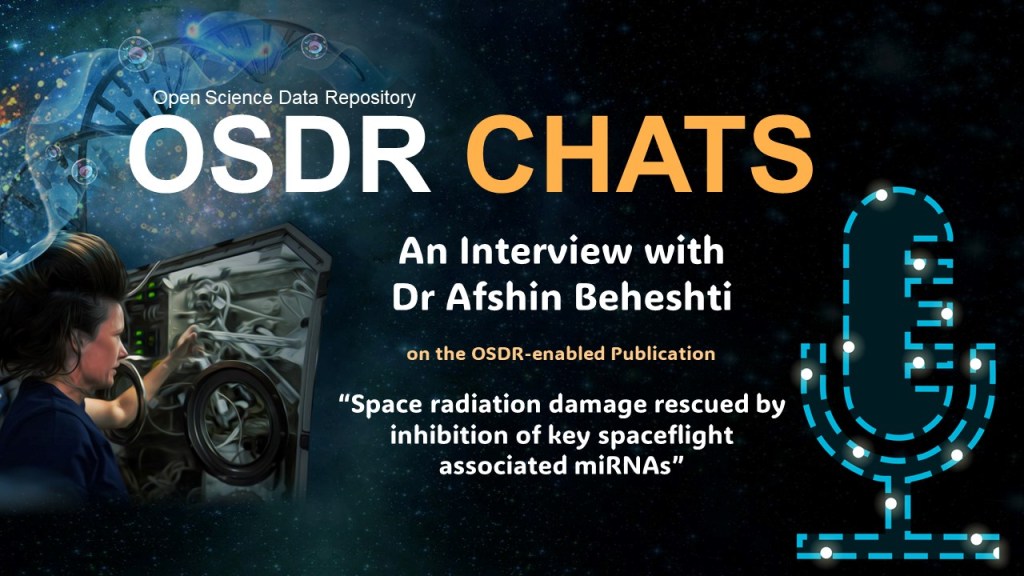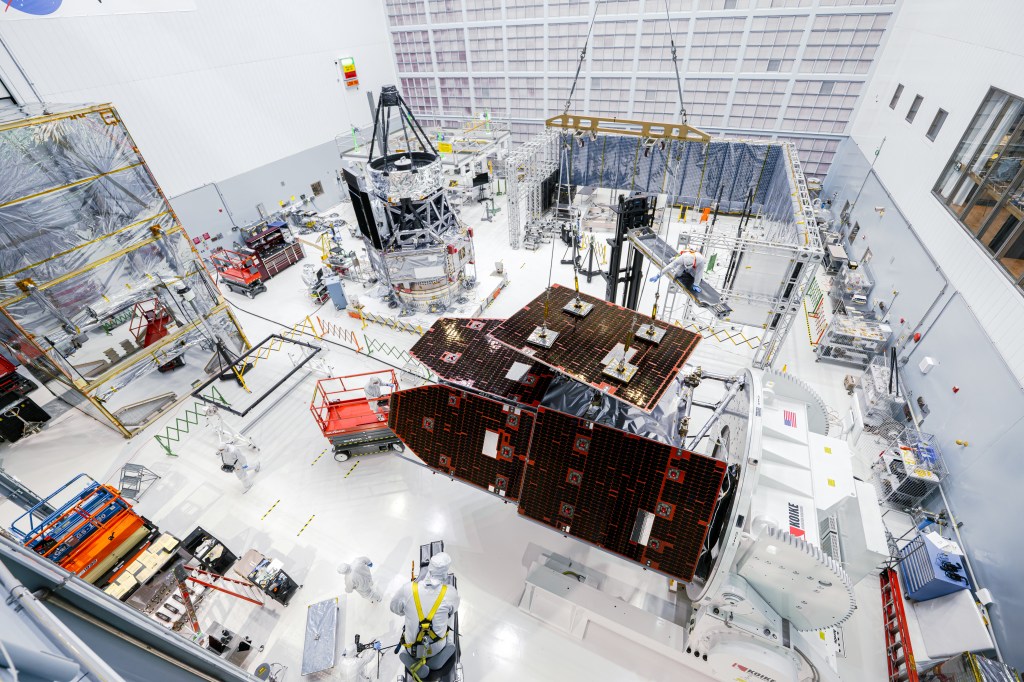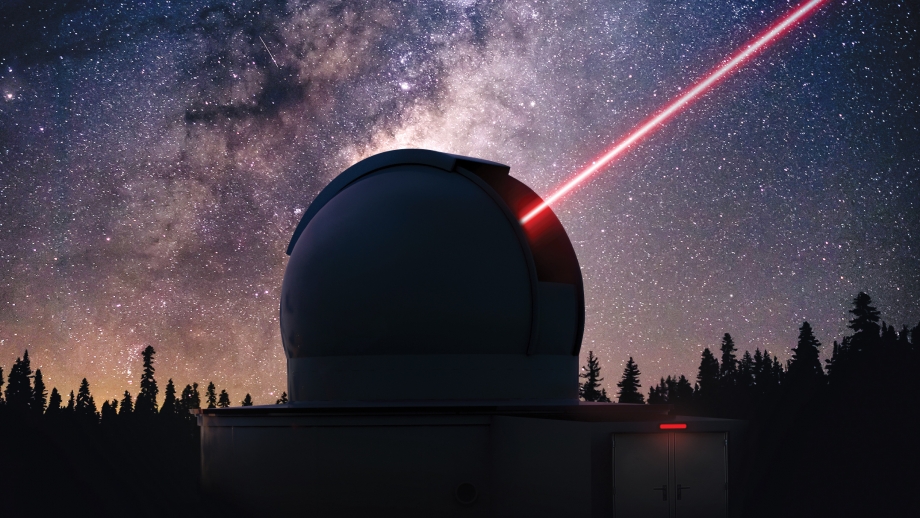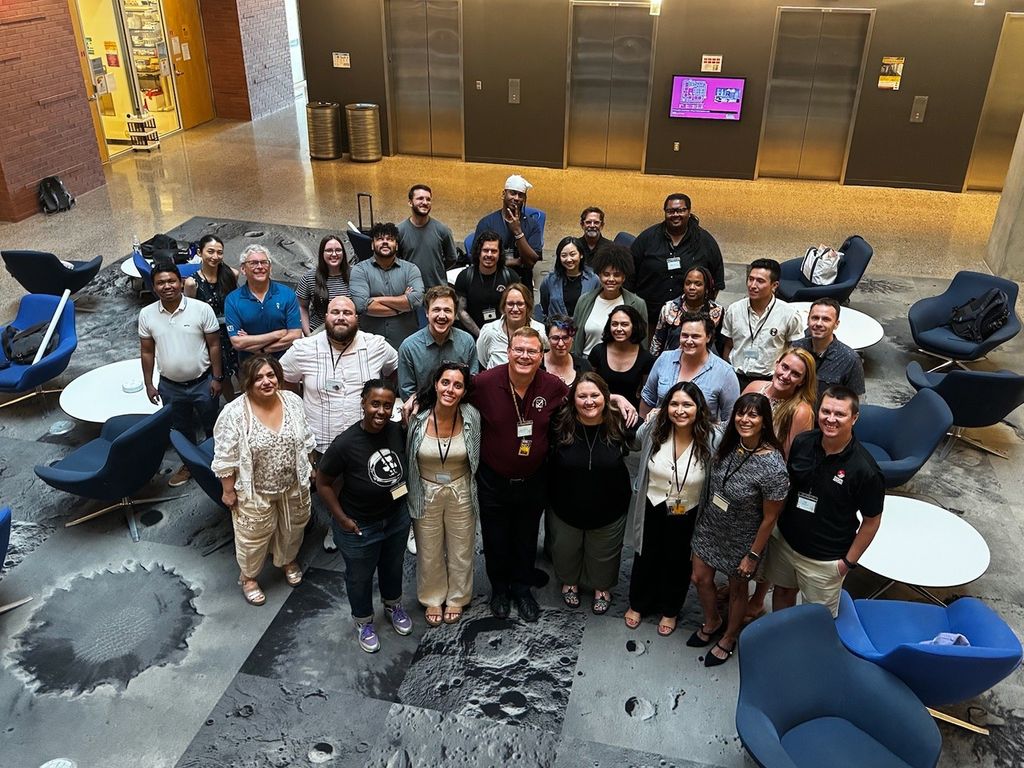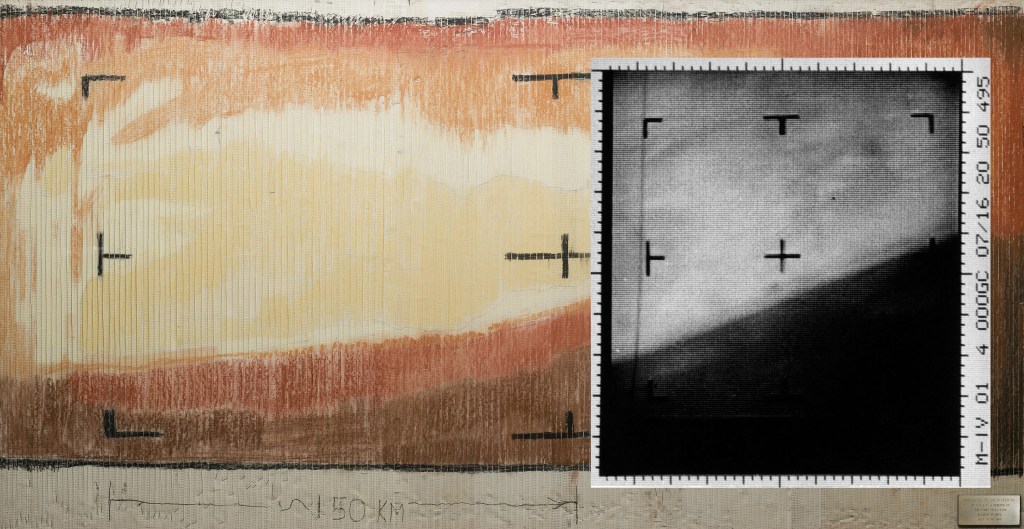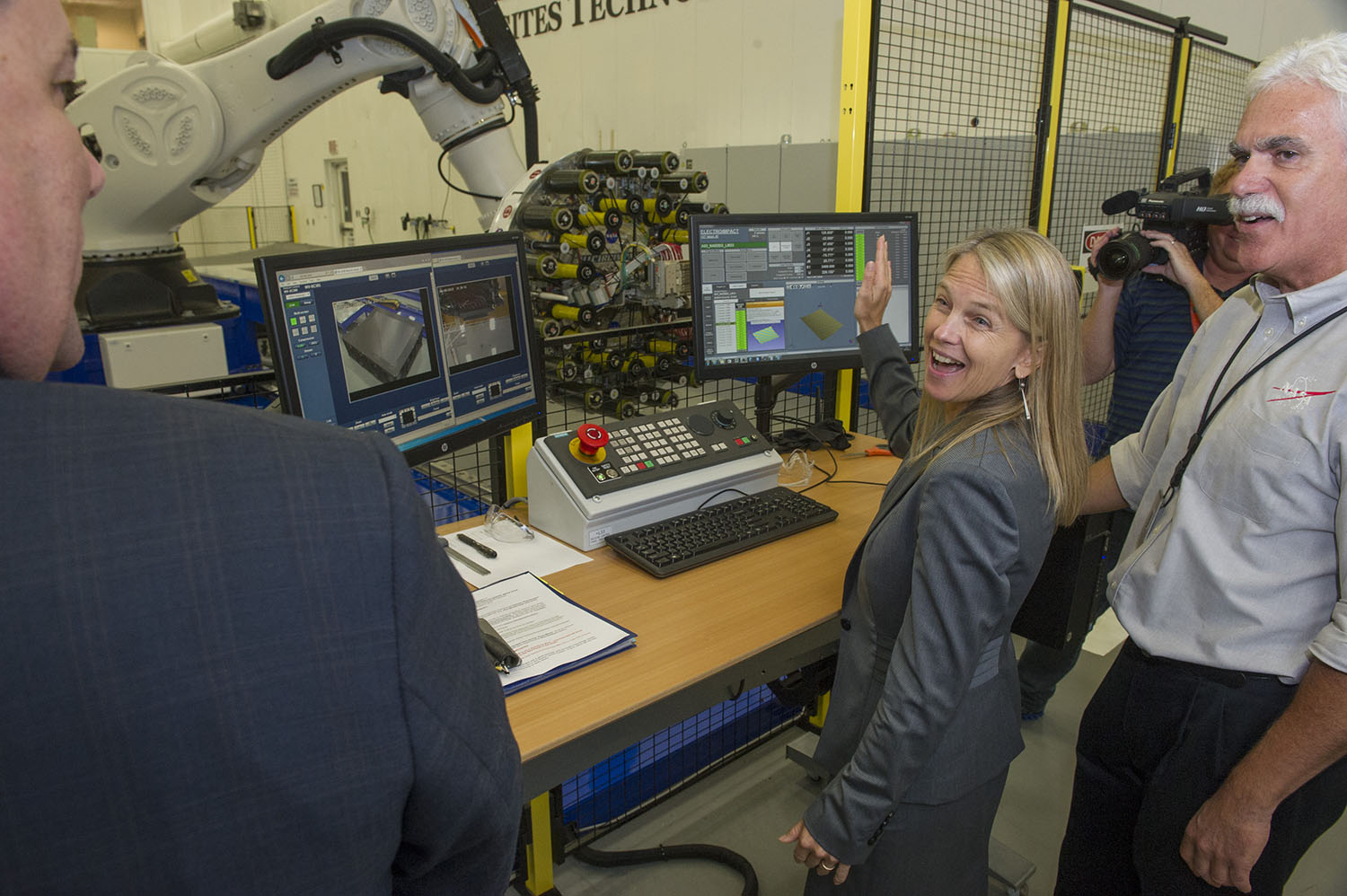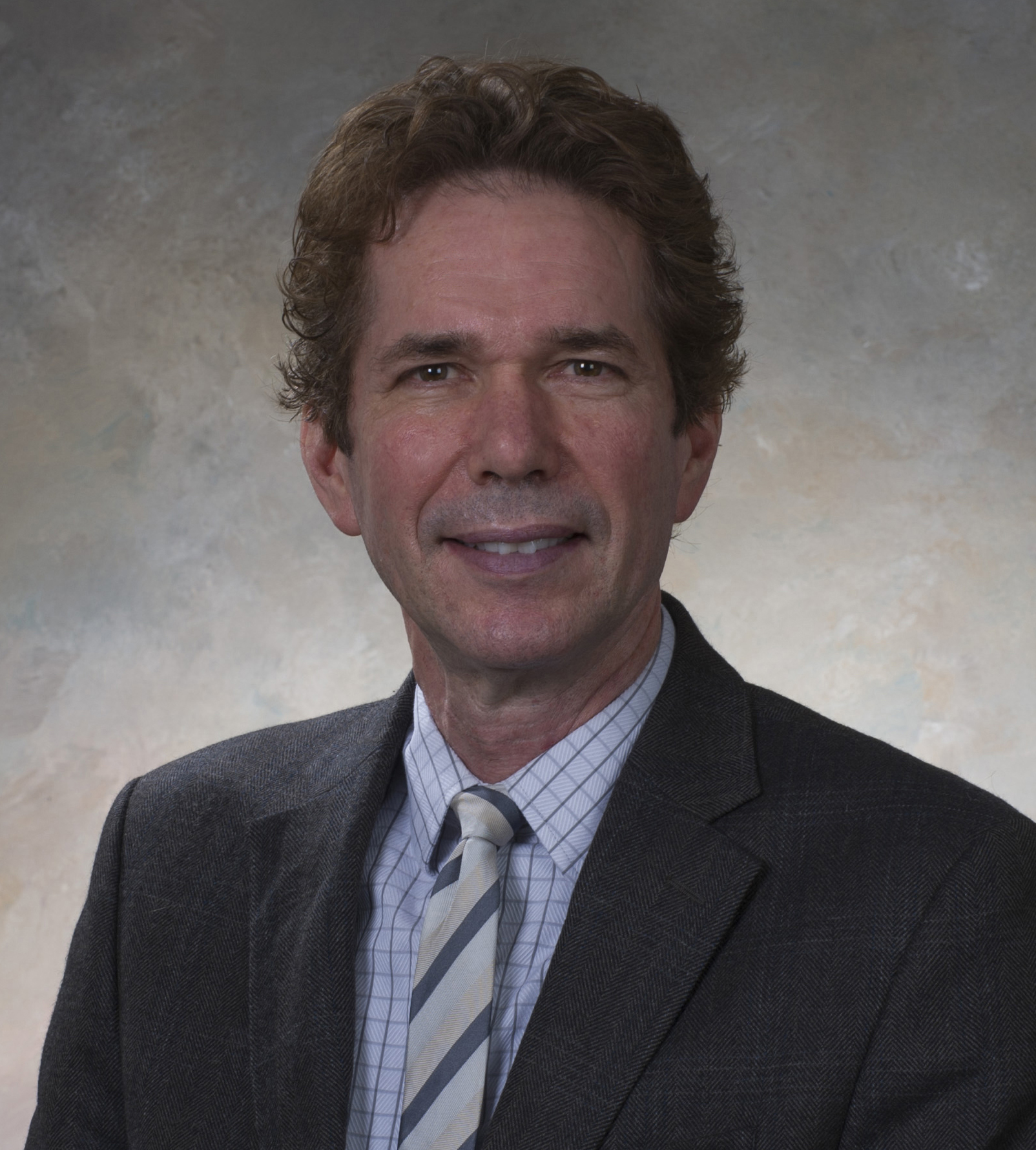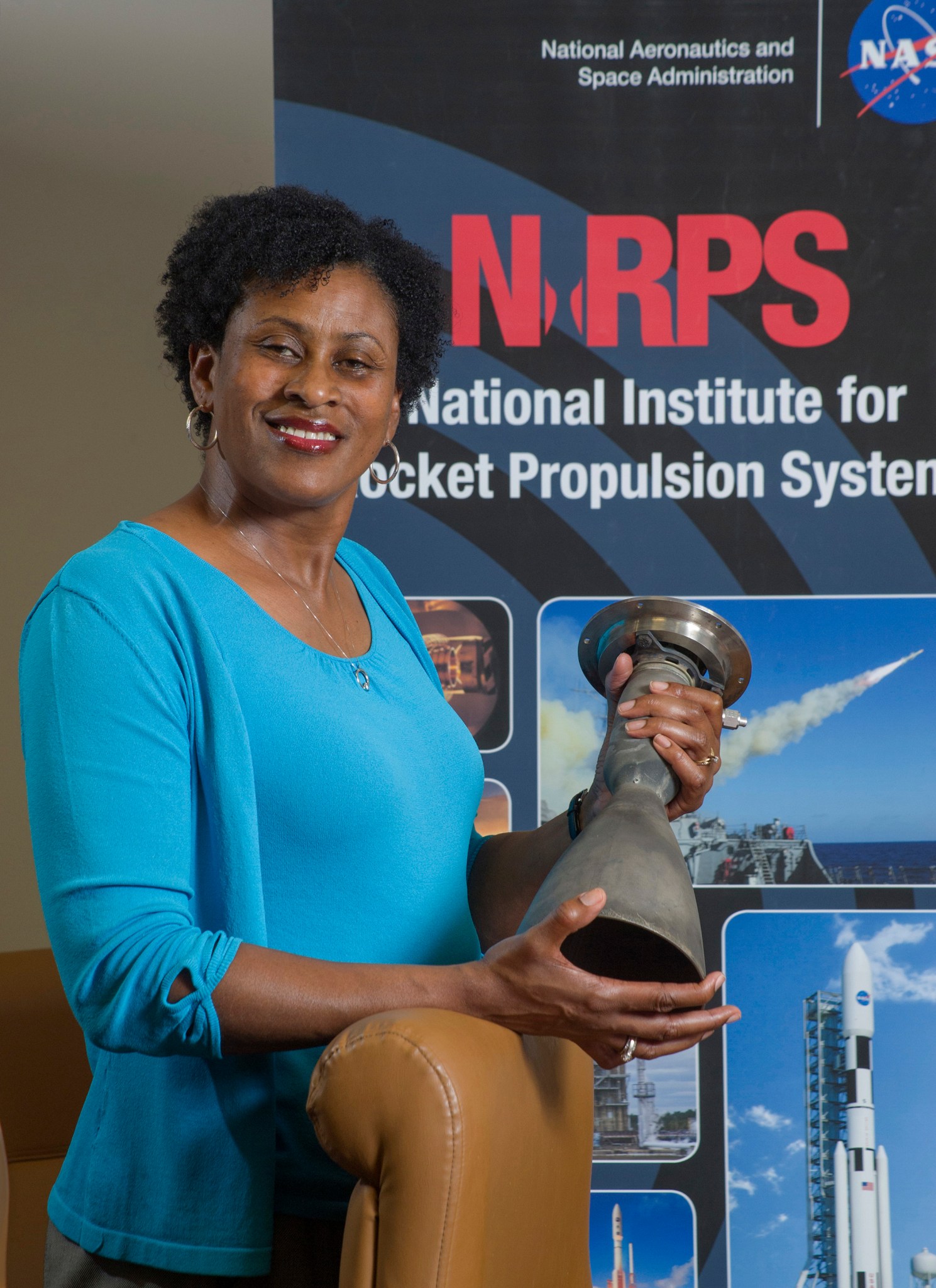In This Week’s Star
- ‘It’s Great to be Back!’: NASA Deputy Administrator Dava Newman Visits Marshall Center
- RS-25 Engine Test to Air Live on NASA TV, Desktop TV
- Paul McConnaughey Named Marshall’s Associate Director, Technical
- Summer Interns at Marshall Center Highlight Work Experiences During Poster Exposition
- Marshall Astrophysicists Study Intricate Activity of Solar X-ray Jets
- Marshall Engineer Rhonda Childress-Thompson Gains Leadership Experience, Grows Network With SMDC Detail
- NASA Deputy Administrator Dava Newman’s Visit to Marshall Center Featured on ‘This Week @NASA’
- This Week in NASA History: High Energy Astronomy Observatory 1 Launches — Aug. 12, 1977
- Obituaries
‘It’s Great to be Back!’: NASA Deputy Administrator Dava Newman Visits Marshall Center
By Bill Hubscher
Dr. Dava Newman made her first visit to NASA’s Marshall Space Flight Center Aug. 6 as NASA deputy administrator, touring multiple facilities and taking advantage of opportunities to interact with the Marshall workforce.
Newman began her day addressing personnel and taking questions at an all-hands meeting in Morris Auditorium, where she shared her passion for science and enthusiasm about returning to Marshall. Newman was part of a scientific team that flew an experiment on the space shuttle in the 1992 and was in Huntsville for that mission.
“I worked and lived here during STS-42,” Newman said. “It was my first spaceflight experiment — what an opportunity for me as a young engineer. We were looking at accessing astronaut short-term memory and reaction time in microgravity, and then we looked at ergonomics in microgravity. One of the best moments from when I was here was watching an astronaut floating upside down while conducting our experiment. It’s great to be back.”
At the conclusion of the all-hands meeting, Newman moved to Building 4205 for a behind-the-scenes look at technology behind NASA’s Space Launch System, the new rocket system managed at Marshall that will enable astronauts to explore destinations far into the solar system.
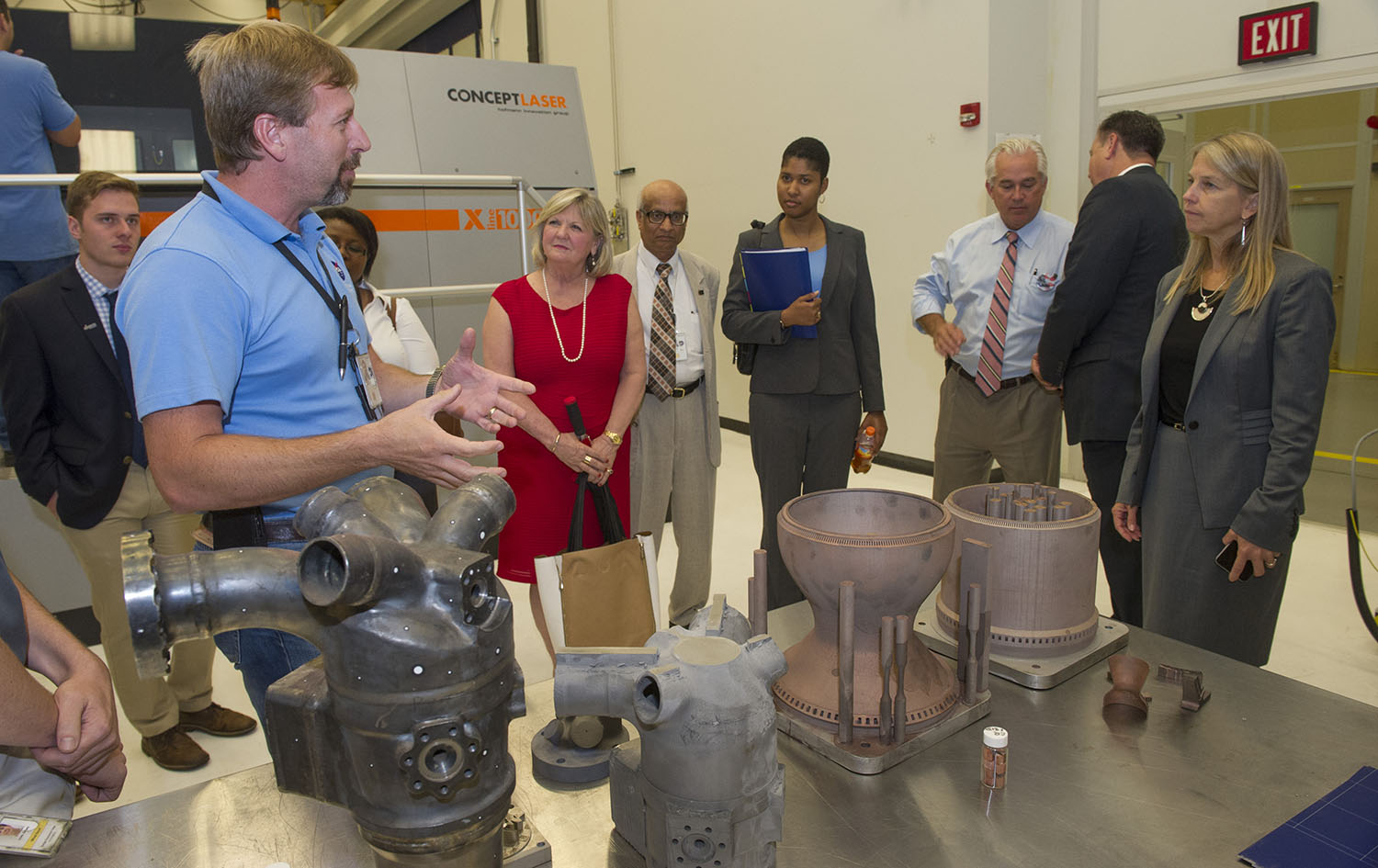
Newman also provided the keynote address at a Women’s Mentoring Event hosted by Marshall Deputy Director Teresa Vanhooser. After her presentation, she held a series of casual round-table mentoring sessions with those gathered in Building 4316.
Newman continued her Marshall tour at NASA’s National Center for Advanced Manufacturing Composites Technology Center in Building 4707, officially activating a new robotic fiber placement system slated for building the largest composite rocket parts ever manufactured. She was joined by Jeffrey Sheehy, the senior technical officer of the Space Technology Mission Directorate at NASA Headquarters, to see the newly installed robot and other facility equipment for making composite structures.
“We push the advancement of technology here at Marshall,” said Marshall Center Director Patrick Scheuermann. “NASA is developing capabilities that enable more affordable, lightweight materials and processes across its unique missions, systems and platforms. We push the state of the art here in Huntsville and the investment in this device will help us do that.”
At this stop on her tour, Newman also addressed members of the media who were on hand to record the activation of the robot.
“The scientific progress made here is critically important in our journey to Mars,” Newman said. “All the creativity, imagination and innovation that comes out of this place will help us put boots on the red planet, and that’s something I want to be a part of. We can use this device to design and build the structures and vehicles that make exploration happen. I want us to never stop playing with technology, inventions and science.”
Lightweight composites have the potential to reduce a rocket’s weight, allowing it to carry additional payloads and lowering rocket construction costs. NASA is conducting composites manufacturing development and technology demonstration projects for composites infusion in the evolved SLS.
Newman then toured the Additive Manufacturing Lab in Building 4707, learning more about Marshall’s role in developing 3-D printed engine parts and in-space manufacturing of parts that were printed on the International Space Station.
Her day at Marshall continued with a short visit to mission control for science on the International Space Station — the Payload Operations and Integration Center in Building 4316. She toured the control room where flight controllers work 24 hours a day, 365 days a year to help astronauts in orbit and scientists on the ground with hundreds of investigations. Newman concluded her tour in Building 4755, where she gained a new understanding of the technology that keeps astronauts safe and healthy on the space station, in the Environmental Control & Life Support Systems section,.
Newman will post her own thoughts on her visit to Huntsville at her blog.
Hubscher, an ASRC Federal/Analytical Services employee, supports the Office of Strategic Analysis & Communications.
RS-25 Engine Test to Air Live on NASA TV, Desktop TV
NASA’s next great rocket, the Space Launch System, is fired up for the RS-25 engine. For three decades, the world’s most reliable engine, the RS-25, powered the space shuttle. Today, those engines are being modified to carry SLS into deep space.
The program is preparing for the sixth developmental test in the seven-test series of the engine. The 550-second, full-duration test window will open at 3:30 p.m. Aug. 13 at NASA’s Stennis Space Center’s A-1 Test Stand Complex.
This week, NASA’s Marshall Space Flight Center has highlighted the progress of the engine’s development with employee interviews, videos, photos and articles leading up to the test firing on the SLS ExplorNet community page and will continue coverage throughout the engine test firing.
At 10 a.m. Aug. 13, Marshall and Stennis will host a NASA Social event, inviting social media users from all over the country to get an exclusive look at the RS-25 engine and Stennis. The NASA Social will be broadcast live on NASA TV and Ustream. Questions will be taken both from the live and online audiences via Twitter using the hashtag, #askNASA.
Marshall employees are encouraged to watch the SLS rocket engine hot-fire test, which will be carried live on NASA TV, the SLS ExplorNet community page, the center-wide TV monitors and Desktop TV starting at 3 p.m. Aug. 13. NASA officials will give remarks following the test.
Employees and the public can also follow the SLS rocket engine hot-fire test via the Marshall and SLS Twitter accounts, @NASA_Marshall and @NASA_SLS, and using the hashtag #SLSFiredUp.
For more information on SLS, click here.
Paul McConnaughey Named Marshall’s Associate Director, Technical
NASA’s Marshall Space Flight Center Director Patrick Scheuermann announced on Aug. 5, that Paul McConnaughey has been named to the Senior Executive Service position of associate director, technical. McConnaughey succeeds Dale Thomas who recently retired.
As associate director, technical, McConnaughey will provide advice and assistance to Scheuermann in support of Marshall’s entire body of work. He will perform special studies, provide advice and assistance in policy review, manage and report on center-wide and directorate metrics and develop benchmarking strategies.
McConnaughey previously served as the chief engineer in the Exploration Systems Development Division. In that role, he served as the lead technical authority on all technical and engineering matters while providing the associate administrator for the Human Exploration and Operations Mission Directorate and the Exploration Systems Development deputy associate administrator with assessments of the impact, effectiveness and efficiency of NASA’s exploration systems investments.
He joined Marshall in 1986 as a mathematician in the Systems Dynamics Laboratory. Within three years, he advanced to supervisory positions, including team lead, branch chief and division chief. In 1998, McConnaughey served as NASA deputy manager for the Military Spaceplane Technology Office, where he worked on space vehicle technologies of joint interest to NASA and the U.S. Air Force. He was reassigned as technical assistant to the director of the Engineering Directorate in 1999, where he concurrently served a detail to the Office of the Director of the Space Transportation Directorate.
McConnaughey was appointed to the SES in 2000 as director of the Engineering Directorate’s Structures, Mechanical, and Thermal Department. In 2004, he was reassigned to the position of deputy manager of the Spacecraft and Vehicle Systems Department, directing the research, development, design and integration of state-of-the-art spacecraft and vehicle systems and exploration missions. From 2007 to 2011, he served as Marshall’s chief engineer overseeing Marshall’s Technical Excellence initiative. In 2011, he was named associate director for technical management within the Engineering Directorate.
For his service to NASA, he has received three NASA Exceptional Service Medals, a NASA Outstanding Leadership Medal, a Center Director’s Commendation and a Certificate of Appreciation. McConnaughey also received the Presidential Rank Award for Meritorious Executive in 2011, the second-highest award conferred by the president of the United States.
McConnaughey earned his bachelor’s degree from Oregon State University in Corvallis, and a master’s degree and a doctorate from Cornell University in Ithaca, New York.
Summer Interns at Marshall Center Highlight Work Experiences During Poster Exposition
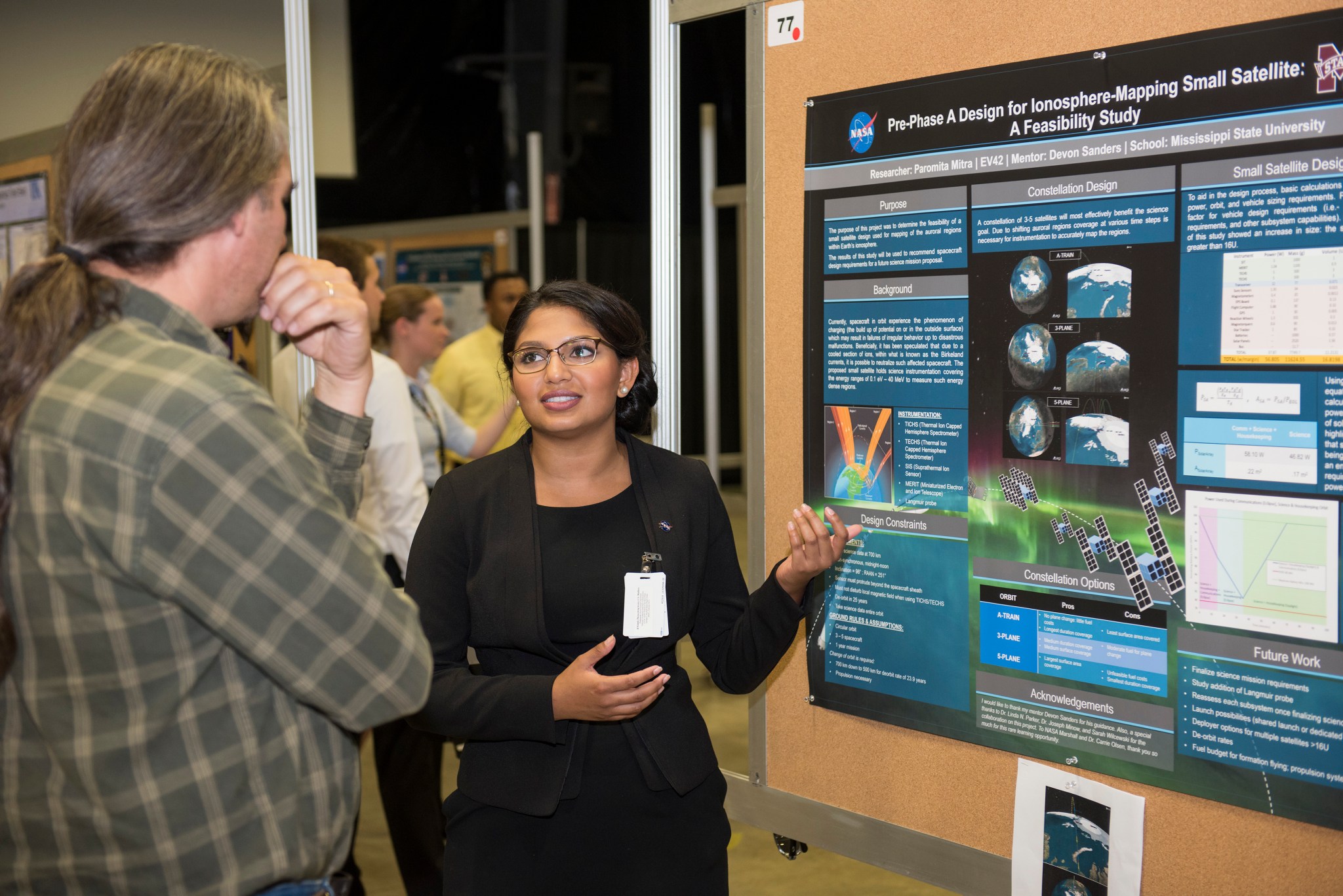
Marshall Astrophysicists Study Intricate Activity of Solar X-ray Jets
By Brian C. Massey

The sun, our closest star, is quite an amazing celestial body. Not only is it the heart of and the largest object in our solar system, it’s also essential to life on Earth — it drives our weather patterns, affects our water cycles and circulates our atmosphere. Scientists at NASA’s Marshall Space Flight Center study the sun in great detail.
“It’s really important for us to understand the star in our backyard,” said Marshall astrophysicist Alphonse Sterling. “It’s our closest laboratory where we can learn more about other stars and the universe.”
Using data from the Hinode satellite, a NASA and Japanese Aerospace Exploration Agency joint mission, and the Solar Dynamics Observatory, the team studied solar X-ray jets in the coronal holes of the sun. Solar X-ray jets are explosions that erupt from the sun’s surface, expelling hot gas into the corona, the sun’s outer atmosphere.
“These jets are very significant,” said Sterling. “They could help us explain one of the long-standing mysteries of astrophysics — the heating of the sun’s corona.”
The internal temperature of the sun can reach nearly 15,000,000 degrees Celsius. As you move outward, the temperature drops. At the photosphere, or the sun’s visible surface, the temperature is only 6,000 C. However, the corona can reach temperatures greater than 1,000,000 C.
“It’s really intriguing,” said Adams. “It’s like moving away from a fire and getting hotter. These jets could help explain the superheating.”
The team chose to examine jets in the solar coronal holes where the jets are more easily observed and occur an average of 60 times a day. The coronal holes also have a relatively simple magnetic geometry making the jets easier to study.
As Sterling, Adams and their teammates examined these jets, they noticed the generally accepted theory of how jets were created didn’t accurately explain what was occurring. The long-standing theory, the Emerging-Flux Model, explained that new flux coming up to the photosphere and its interaction with the photosphere’s complex magnetic topology created the jets.
“We were looking everywhere to find this flux emerging,” said Adams, in regards to an earlier study that set the stage for their current work. “Farther and farther back in time, we sifted through hours and hours of data searching for magnetic signatures, emergences that occurred at the right location to fit the model.”
No matter where she looked, Adams couldn’t find evidence of the emerging flux. Sharing her frustrations with Sterling, who has spent years working with filament eruptions, they began to find similarities with his previous work.
“After we finally realized what we were looking at, it became clear,” said Sterling. “These jets were being caused by filament eruptions — very small, scaled down filament eruptions.”
A filament is a structure in the corona consisting of cool plasma supported by magnetic fields. Filaments can be very, very large — more than 68,000 miles long, or 8.5 times longer than Earth’s diameter — and appear as long threads stemming from the photosphere, suspended in the corona, similar to a loose stitch on a baseball.
Changes in magnetic fields around filaments can cause them to erupt and result in solar flares and coronal mass ejections. CMEs can disrupt the flow of the solar wind, affecting our planet’s magnetic field and causing geomagnetic storms. In Earth’s magnetic field, such disturbances can energize spectacular auroras, cause communications interference and induce overloads in electrical power grids and equipment.
The team believes the small-scale filaments were hidden in earlier studies. Just like in larger filaments, the plasma of the smaller filament is significantly cooler than the corresponding eruption. Earlier satellites recording the eruptions could not separate the two occurrences, essentially hiding the filament. Advances in technology with the Hinode and SDO made it possible to separate the filament from the eruption by observing the event at different wavelengths.
“The important thing we learned in our observations is that things scale down,” said Adams. “As technology advances and we are allowed to see things in greater detail, we continue to learn more.”
“The observations of these jets involve astronomical magnetic fields, plasmas and their interactions,” said Sterling. “These interactions are taking place all over our universe, and it is important for us to understand how these events, from the smallest to the largest, can affect us in our solar system and on Earth.”
Sterling and Adams’ most recent paper, detailing some of their discoveries, was published July 6 in Nature.
Marshall Engineer Rhonda Childress-Thompson Gains Leadership Experience, Grows Network With SMDC Detail
By Brian C. Massey
As NASA is preparing for the journey to Mars, Rhonda Childress-Thompson has taken quite an interesting journey of her own at NASA’s Marshall Space Flight Center. From requirements, to structural design, technology transfer and working with the National Institute for Rocket Propulsion Systems, Childress-Thompson has run the gamut at Marshall.
With her diverse experience and skill set, she was selected to participate in NASA’s Mid-Level Leadership Program, which included a six-month detail working with the U.S. Army Space and Missile Defense Command.
The Mid-Level Leader Program — NASA’s 16-month leadership development program for GS 13-14 engineering, science and administrative professionals — provides leadership development for individuals who have the potential to assume greater leadership responsibilities in formal, program or project management roles.
In addition to the six-month detail, the program included four core-learning sessions, mentoring sessions with senior-level management and professional coaching sessions. The program allowed Childress-Thompson to develop an agency-wide network while learning and developing as a leader, as its 24 members — who included four Marshall team members — represented every NASA center.
Through the mentoring sessions, she shadowed members of senior leadership. She spent time learning from and discussing leadership styles with her program mentor, Andrew Hunter, NASA’s deputy chief financial officer for strategy, budget, and performance; Lesa Roe, NASA’s deputy associate administrator; Teresa Vanhooser, Marshall’s deputy director; and Steve Doering, director of Marshall’s Office of Center Operations.
“I worked in engineering for a long time and I was so detail oriented,” said Childress-Thompson. “The program helped me see the big picture and to observe the decisions senior management make everyday. Throughout the program, they were very open, honest and trusting — I really appreciated that. It allowed me to gain insight from their perspective.”
The capstone experience of her development program came with her six-month detail at the Army’s Space and Missile Defense Command. Located on Redstone Arsenal, SMDC provides planning, integration, control and coordination for the Army’s space, high-altitude and global missile defense efforts.
“It was a great experience for me,” she said. “The entire program helped me grow both professionally and personally. Stepping out of my comfort zone and working with a different government agency really pushed me to grow.”
In unfamiliar territory, she led a team developing the Army’s next generation of small satellites. The project’s focus was research and development for communication satellite technology while collaborating with Marshall engineers.
“I had spent years in requirements development, detail design and technology transfer,” said Childress-Thompson. “Satellites were not what I was used to — that forced me to approach things in a new way and build new relationships — everyday was a learning opportunity.”
In her time with SMDC, Childress-Thompson developed professional relationships and a solid network of connections that will not only be a benefit for her professionally, but will also benefit NASA.
“The program as a whole, especially my detail, has made me a much better NASA employee, leader and agency asset,” she said. “As an agency, that’s what you want — you want the best people working for you and you want to develop the assets you have.”
Childress-Thompson returned from her detail in May to resume her role as Marshall’s collaboration lead for the National Institute for Rocket Propulsion Systems — a multiagency organization consisting of NASA, academic, industry and Department of Defense propulsion experts dedicated to maintaining and advancing the nation’s leadership in all aspects of rocket propulsion for defense, civil and commercial uses.
“Lessons I learned during my detail translate directly into my day-to-day tasks at Marshall,” she said. “I learned new approaches to management and decision making, while working with amazing technologies and developing a technical network that could lead to technology transfer and interagency collaboration opportunities in the future.”
Massey, an ASRC Federal/Analytical Services employee and the Marshall Star editor, supports the Office of Strategic Analysis & Communications.
NASA Deputy Administrator Dava Newman’s Visit to Marshall Center Featured on ‘This Week @NASA’
The Aug. 6 visit by NASA Deputy Administrator Dava Newman to NASA’s Marshall Space Flight Center is featured in the latest edition of “This Week @NASA,” a weekly video program broadcast nationwide on NASA-TV and posted online.
Newman visited the agency’s Composites Technology Center to view a new robotic system that will help NASA build the largest, lightweight composite parts ever made for space vehicles. The head on the robot’s 21-foot arm uses up to 16 spools of “hair-thin” carbon fibers to create precisely shaped parts. These lightweight composites could lower manufacturing cost, while increasing the amount of payload (cargo, equipment and crews) launched on future exploration spacecraft, like NASA’s new Space Launch System rocket.
Newman also spoke with Marshall team members working on additive manufacturing and 3D printing processes; advanced spacecraft propulsion systems, as well as environmental and recycling systems for the International Space Station. Learn more about Newman’s visits to other NASA centers at: http://blogs.nasa.gov/newman/.
View this and previous episodes at “This Week @NASA” or at https://www.youtube.com/user/NASAtelevision.
This Week in NASA History: High Energy Astronomy Observatory 1 Launches — Aug. 12, 1977
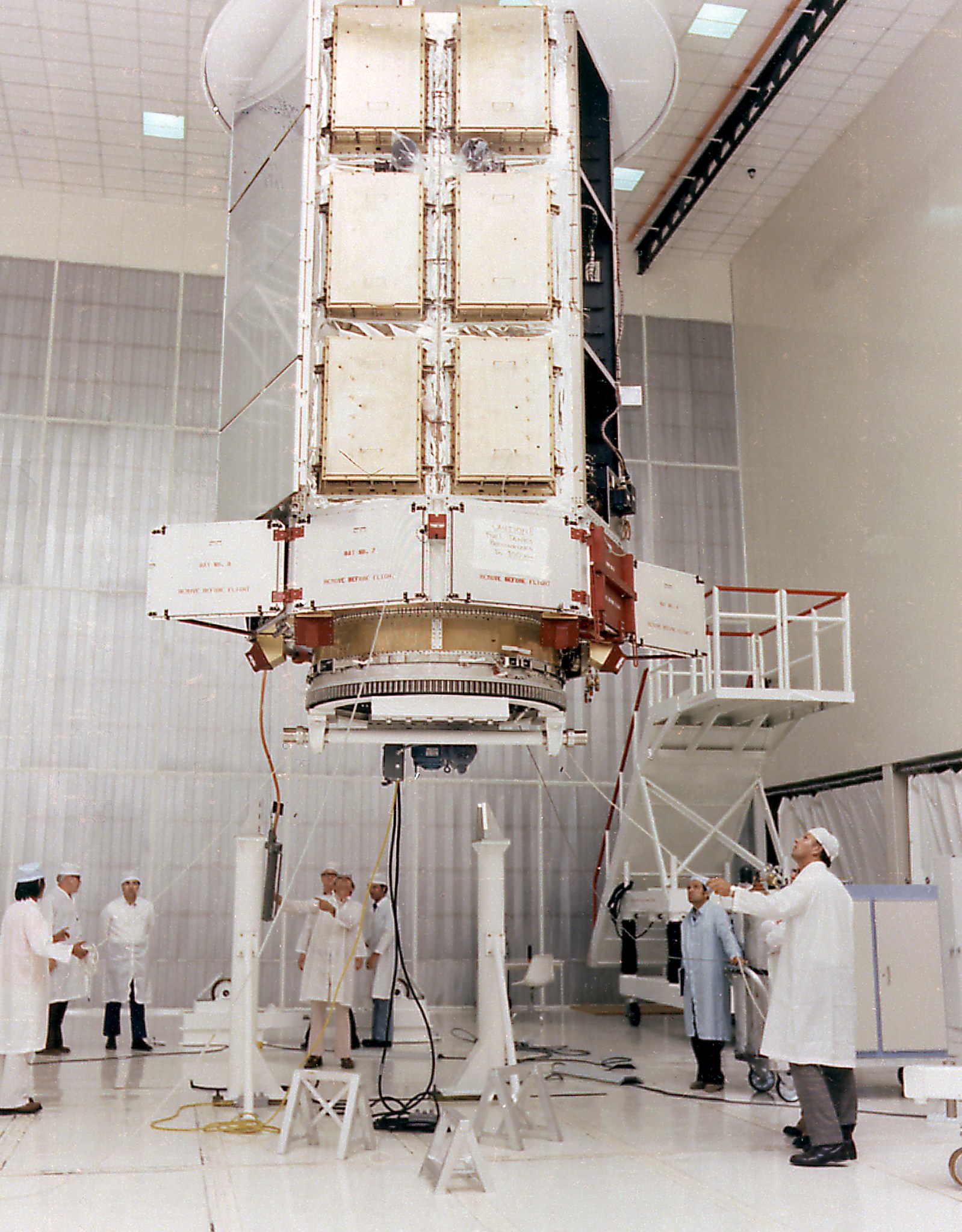
This week in 1977, the High Energy Astronomy Observatory 1, designed to survey the sky for X-ray and gamma ray energy sources, launched aboard an Atlas/Centaur launch vehicle. Launched from NASA’s Kennedy Space Center, the HEAO program was managed by NASA’s Marshall Space Flight Center, and included two additional low-Earth-orbiting spacecraft. The NASA History Program documents and preserves NASA’s remarkable history through a variety of products — photos, press kits, press releases, mission transcripts and administrators’ speeches. For more pictures like this one and to connect to NASA’s history, visit the History Program’s Web page.
Obituaries
James A. Clemons, 78, of Decatur, Alabama, died April 11. He retired from the Marshall Center in 1997 as a supervisory cost accountant.
Timothy P. Walton, 53, of Hartselle, Alabama, died May 8. He retired from the Marshall Center in 2005 as an aerospace engineer. He is survived by his wife, Alison Walton.
William H. Harmon, 83, of Franklin, Tennessee, died July 27. He retired from the Marshall Center in 1990 as an aerospace engineer.
Clayton D. Andrews, 78, of Scottsboro, Alabama, died Aug. 1. He retired from the Marshall Center in 1998 as an aerospace engineer. He is survived by his wife, Paula Andrews.
James T. Mahathey, 95, of Arab, Alabama, died Aug. 5. He retired from the Marshall Center in 1976 as an electronics technician.


